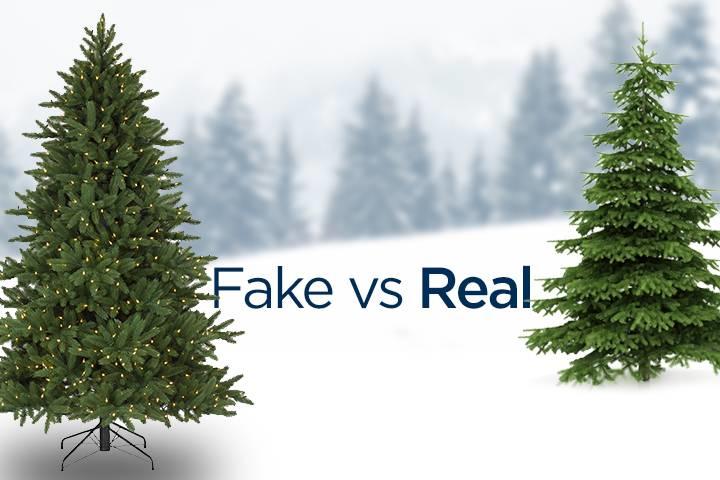Real vs. Fake Christmas Tree: Which One To Choose?

The iconic Christmas tree is the devote symbol of the winter season and the Holidays for many different people and communities. Historically speaking, plants and trees that keep their color in the winter had a special meaning for people of all cultures and nationality in the winter.
People hung pine, spruce, and fir tree decorations on their doors and over the fireplaces. Early Romans would even mark the winter solstice and celebrate the God Saturn with a grand Saturnalia dinner, excited that their farms would be fruitful and green the coming year.
In the 16th century, Martin Luther, the protestant reformer, is believed to have first added candles to a tree. He was awed by the stars tangled in the dark, green branches of evergreen trees.
If you’re looking for a Christmas tree, or there’s already one propped up in your home, it seems that in almost all instances, whether you buy the farm-green Christmas tree or purchase a plastic one, it doesn’t really change the environmental impact you’ll have on the planet.
American Christmas Tree Foundation (ACTA)
Thomas Harman stated that people should not be too much focused on whether buying a fake or real Christmas tree changes something for the environment as there as so many other, bigger issues for the environment today.
Harman is on the Board of the American Christmas Tree Foundation (ACTA), and is a proud seller of artificial trees himself. He also is an educator on the consumption and use of Christmas trees. Two years, ago the ACTA completed a life-analysis study on real and artificial trees.
The two factors that impact the carbon footprint of your Christmas tree production and product is how far you go to purchase the evergreen tree, and how long you keep your plastic tree.
A plastic tree has a larger environmental impact than an evergreen tree because of the amount of years and energy it takes to create the product. If you do have a plastic tree, keep it for three years to bring down the carbon footprint. Often plastic trees end up in landfills and decomposition takes years!
In many cases, you’re better off with purchasing a Christmas tree from a farm. The part that impacts the carbon footprint of a Christmas tree is how far you drive to get it and where the nearest greenery disposal is.

A plant is a renewable resource, meaning it is grown in the environment and can be disposed of naturally. Years of pesticide and water consumption have environmental costs, too. However, the amount of plastic, materials, and overall energy to factory-make plastic trees has higher costs.
You might hear arguments from people who buy fake trees that keeping a plastic tree for ten years is better for the environment because it saves 10 farm-grown trees. However, a Montreal firm confirmed that a plastic tree should be reused for at least 2 decades to be a greener choice.
A recent study showed that the carbon emissions resulting from a farm-grown tree are were only a third of that of fake trees over a 6 year life-span. A lot of plastic trees are made of polyvinyl chloride, or PVC, elements which can be cancerous.
Overall, don’t fret too much about whether you go plastic or go farm-grown with your tree. There are plenty of environmental impacts that are much more detrimental to the environment than the Christmas tree industry.
Consider how long you use your fake tree, and where you dispose of your evergreen tree, and also how far you drive to purchase it. How evergreens are farmed and harvested, though has a much small carbon footprint, and this might be the best option.
Plus, they smell amazing and completely light up a room! The real trees produce oxygen, fight carbon and are an important element of the habitat for animals and birds.
You can consider exit options for your evergreen. There are plenty of disposable options that are both local and better for the environment than trashing the tree with your empty yogurt cans and leftover Christmas eggnog.
Give your tree a greater purpose than decoration, and show its short end of life some respect! You can send your tree to be burnt or mulched. Look into curb-side recycling in your town. Chop it up and use it for wood under the fire!
Whatever you choose or consider, do the environment a favor and choose a few healthy carbon footprint reversals to compensate for some of the bad mojo your Christmas tree sent out into the environment.
Take the bike to work, use reusable recycling bags, and be responsible about your waste!
Enjoy your tree and keep the environment in mind.
Pin for later

